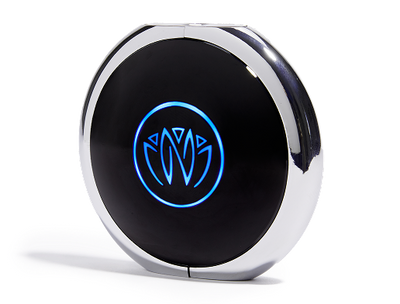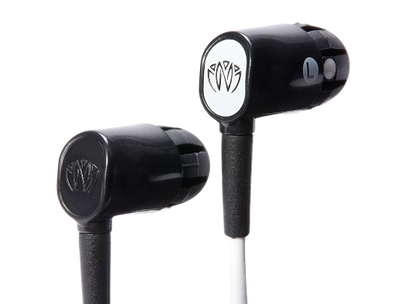At some point, we all experience anxiety in some form or another. These feelings of fear, dread, and uneasiness aren't entirely avoidable for any of us. But there are ways to take back control when anxiety takes over. But treating anxiety isn't a one-size fits all approach. To understand the most effective ways of treating anxiety, it's important to understand how anxiety works in the first place, including understanding the stress response and what it does to the body.
And these are all topics we're going to discuss in this post. From just how common anxiety is, to when it's time to get help, to the different methods of treating anxiety, we'll make sure by the end of this post you're more informed and empowered about your options.
The Anxiety Epidemic
While experts almost universally agree there is indeed an epidemic of anxiety in our modern world, the same can be said for almost every generation. What's different in most generations, however, are some of the anxiety-inducing factors in our lives.
For example, "social media anxiety" is on the rise, and particularly with younger people although no age group is immune to it. Not to mention, ever-growing anxiety surrounding the COVID-19 pandemic.
As for just how common anxiety is? Consider this statistic from Inomics.com: "It's now the most common mental illness in the US, affecting over 40 million people, the majority young adults."
Further, here are more fast facts about anxiety from the Anxiety & Depression Association of America:
- "Anxiety disorders are the most common mental illness in the U.S., affecting 40 million adults in the United States age 18 and older, or 18.1% of the population every year.
- Anxiety disorders are highly treatable, yet only 36.9% of those suffering receive treatment.
- People with an anxiety disorder are three to five times more likely to go to the doctor and six times more likely to be hospitalized for psychiatric disorders than those who do not suffer from anxiety disorders.
- Anxiety disorders develop from a complex set of risk factors, including genetics, brain chemistry, personality, and life events."
These statistics might not be all that surprising to you. Anxiety is not only a common feeling, but it's also a common topic of conversation, especially considering current events. But before we dive into some of the different methods of treating anxiety, let's first talk a bit about the science of anxiety.
What is Anxiety?
Generally speaking, anxiety is a response to stress. Stressors can include any number of things, including physical threats, emotional trauma, and any kind of uncertainty. In these situations. While stress causes a number of physical responses and affects the body in several ways, including an increased heart rate and sweating, it also induces emotions and feelings, including dread, fear, and easiness—AKA: anxiety.
In certain situations, anxiety and stress are useful. But only up to a certain point. When stress and anxiety become chronic and unmanageable? It not only makes it harder to live an enjoyable life, but it can also have lasting impacts on our brain and body.
Consider this helpful explanation from Pronghorn Psych about some of the effects of anxiety on the brain and body, as well as what different levels of anxiety might look like:
"When excess amounts of stress hormones flood the brain over and over again, your baseline level of anxiety may increase. You might go from having mild anxiety, which most of us experience on a day-to-day basis, to moderate anxiety. Moderate anxiety is slightly more severe and overwhelming and makes you feel nervous and agitated on a regular basis. If your brain continues to be overly sensitive to anxiety, your baseline anxiety level might become so severe that you’re unable to continue thinking rationally. Panic attacks are another sign of severe anxiety. If you have moderate or severe levels of anxiety, brain maps called Quantitative Electroencephalography (qEEG) may show a large amount of high beta brain waves on the right lobe."
Different Methods of Dealing with Anxiety
There are a number of different methods for dealing with anxiety, most of which fall under these categories:
- Therapy and counselling
- Medication (several different medications are FDA-approved for anxiety)
- Complementary and alternative treatment
- Transcranial Magnetic Stimulation
Today, however, we're focusing on one particular option that falls under complementary and alternative treatments: tVNS.
tVNS or transcutaneous vagus nerve stimulation is an accessible and non-invasive option for treating anxiety. Further, it's useful for a number of other purposes. These include improving sleep, promoting overall well-being, creating a brighter mood, and more.
So, what exactly is it and how does it help people manage their anxiety? Let's talk about that next.
What is tVNS?
Vagus nerve stimulation, as new age as it might sound, isn't a new concept. For centuries, people have been utilizing different methods for stimulating the vagus nerve, including meditation, chanting, and cold-water plunges.
And why exactly do they do this? One reason is the overall sense of calm and well-being they promote as a result of stimulating this nerve that controls part of your body’s automatic responses—the parasympathetic nervous system.
The vagus nerve controls a big range of functions and communicates sensory information between the brain and the organs. It's vital for activating your relaxation response and helping regulate tension. The stronger your vagus response, the more likely you may be to recover quickly from stressful events.
However, chanting, meditation, and cold-water plunges aren't the only way of stimulating it. There are also more invasive methods, including surgically implanting a device to stimulate the vagus nerve. This option is typically sought for patients with seizure disorders or major depressive disorders.
But there is another option we have yet to discuss in detail that can be particularly useful for managing and treating anxiety: tVNS by way of vagus nerve stimulating headphones.
Dealing with Anxiety Using tVNS
With vagus nerve stimulating headphones, the vagus nerve is stimulated through the ear, which is a form of transcutaneous vagus nerve stimulation. There is a branch of the vagus nerve behind the ear, which makes this a prime location for targeting it. And one of the most accessible, non-invasive ways to do this is with Xen by Neuvana headphones!
Xen is a patented electronic device that delivers gentle micropulses through headphones directly to the vagus nerve located in your ear. It pairs wirelessly to your Neuvana app, where you can customize your sessions. The result? Improved focus and calm anywhere you are easily fitting into your daily routine.
Those aren't the only effects many people experience as a result of utilizing tVNS. In fact, it can be an incredibly effective option for treating anxiety, particularly in conjunction with other efforts, including therapy and medication.
There have been numerous studies done on the effects of tVNS. These include for treating anxiety, improving depression, promoting better sleep, and a number of other benefits. And the results have been incredibly promising!
Consider the findings from this Parasym study
"Brain scans also revealed the positive effects of tVNS on several key regions that have been linked with emotional regulation. The connectivity between the DMN and the right anterior insula and parahippocampus was reduced significantly, while the opposite effect occurred between the DMN and precuneus and orbital prefrontal cortex. The researchers believed such adjustments in connectivity between key brain regions could explain the improvement in depression score."
Pretty exciting, right?
Try it Today
Whether you're looking for new ways of treating anxiety without medication or simply want to feel better, improve your sleep and recovery, enhance your focus, and reap the other rewards of tVNS, don't wait another day to try it out.
Browse our selection of Xen products here. Or, take a look around our blog or the other resources we share to learn even more about tVNS.





